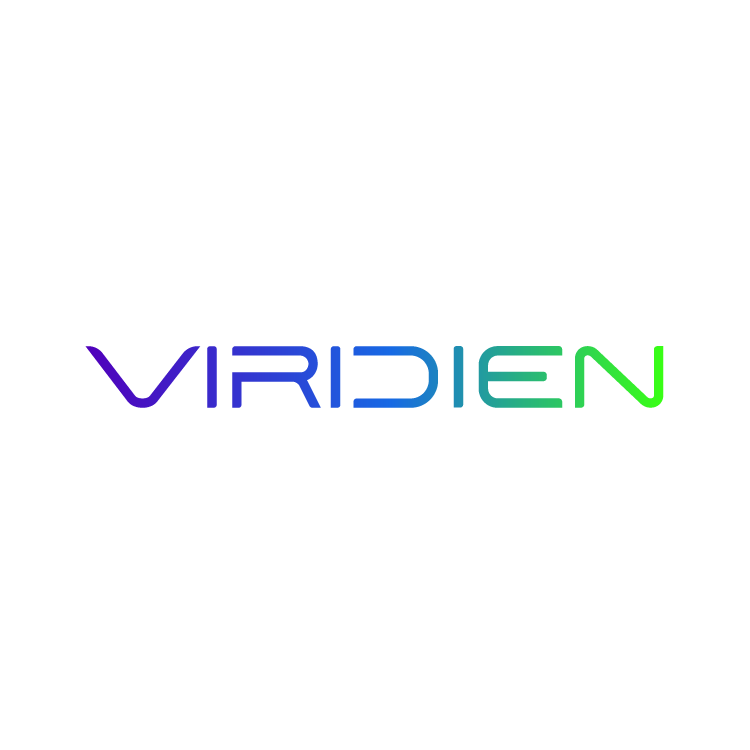Welcome to the GET2025 Carbon Capture & Storage Conference
The 6 th edition of the EAGE GET event will see a distinctive focus on Carbon Capture & Storage (CCS). The conference will be organized in the city of Rotterdam for the second consecutive year. This is an excellent choice of location as the port of Rotterdam is on course to become one of the first operating CCS hubs in the world, with several projects that are near or have passed FID.
Besides a rich programme touching on a wide range of technical developments, the conference will have a variety of dedicated and strategic sessions on current areas of key focus that are critical for the further development of the CCS business case, in the regulatory and commercial remit.

Energy’s Future Unlocked
Join us for this unique opportunity to collaborate and take action to drive the global energy transition forward.
“We are pleased to invite everyone
… working in the space of Carbon Capture, Utilization and Storage (CCUS) at the 6th edition of the EAGE GET event in Rotterdam from 27- 31 October 2025.
Following the concept of a very successful GET event last year, the EAGE will again be organizing four parallel conferences at the same location, covering the topics of Geothermal energy, Offshore wind, Energy storage, hydrogen and CCS. GET25 will provide a cross-industry platform for those working in this domain to connect and share their knowledge on the key topics surrounding the use of the subsurface in support of the energy transition. The cross-conference strategic sessions and the lay-out and setup of the conference venue will allow for a vibrant exchange of information and knowledge between participants working on different aspects of subsurface in the space of the energy transition. To compliment a high-quality technical program on the topic of CCS and in true GET style, several dedicated sessions will be included in the program. Invited high-level speakers from industry, academia, regulatory bodies and other CCS stakeholders will provide a deep dive on selected topics to paint a broader perspective around certain challenges for further growth of the CCS industry.

Senior Geoscientist – Carbon Capture and Storage Capability team
Shell
Co-Chair Carbon Capture and Storage Conference
“We are delighted with the choice of Rotterdam as location of this event.
…The port of Rotterdam is on course to become one of the first operating Carbon Capture and Storage (CCS) hubs in the world, with several projects that are near or have passed FID.
As in previous GET events, the topic of CCS will figure prominently in the program. The next years until 2030 are crucial for the CCS business to prove a sustainable, reliable and rapid scale up of CCS projects, CO2 transportation and storage capacity.
In this light, the conference wants to focus on:
– Technological advancements in the space of reservoir characterization for capacity and injectivity assessment, containment risk assessment and geophysical monitoring of future CO2 plumes.
– Further progress in the integration pathway between technical scoping and commercial operation for CCUS projects
– Lessons learned from existing pilots & projects with CO2 injection
– Examples of hybrid projects

New Energy Domain Lead – EXD, SLB
Co-Chair Carbon Capture and Storage Conference
The CCUS conference wants to focus on:
Participant’s
Profile
Bringing Carbon Capture and Storage (CCS) projects to fruition requires integration between policy makers, industry representatives, researchers, NGO’s and civil society and investors. The exchange of ideas and knowledge in the nascent CCS business is an enabler to efficient and low-cost maturation and operation of CO2 storage projects in the near future.
Discussions as part of the technical program and the dedicated & strategic sessions can shape new ideas and nurture further progress between all the CCS stakeholders.
Abstract Highlights Available for Free!
Carbon
capture &
storage CONFERENCE
EAGE is excited to offer a curated selection of conference abstracts, available free of charge. These abstracts provide valuable insights into the cutting-edge content that will be presented at the event.
Stay up-to-date with the latest research and developments by following our LinkedIn channel for daily updates on newly published articles. Alternatively, you can check this page regularly to explore the latest featured abstracts and stay informed throughout the conference season.
Authors; Dr Niels Schovsbo¹, Dr Finn Mørk¹, Dr Henrik Ingerman¹
Affiliation; ¹GEUS
Summary; Rock properties, including geomechanical and petrophysical characteristics, are crucial for assessing CO2 storage safety and viability. In Denmark, the Lower Jurassic Fjerritslev Formation serves as the main seal for key target reservoirs, yet its properties are poorly understood, particularly in the North Sea and western onshore Denmark. Most exploration wells in this area were drilled between the 1950s and 1980s, with limited cores and inadequate log suites. We present an assessment of the Fjerritslev Formation's rock properties in three wells based on a recent screening of cuttings using HH-XRF. Using advanced multilinear regression models, we provide a harmonized dataset that includes volumes of clay, quartz, and carbonate, grain densities, and rock mineral brittleness. This approach offers calibrated measures of Vclay from wireline logs, overcoming traditional pitfalls in defining values and harmonizing between different log types. The results indicate that the Fjerritslev Formation is a thick mudstone with a clay content of 30–50% and total porosities of 10–25%. The rock has a mineralogical brittleness index of 0.4–0.5. Porous beds occur within the shales, highlighting its regional complexity and relevance for CO2 storage.
Authors; Mr Vincent Jaffrezic¹, Mr Sylvain Thibeau¹
Affiliation; ¹TotalEnergies
Summary;This paper presents the Northern Lights field case where the appraisal well test of Eos (31/5-7) originally suggested a closed reservoir behaviour. This false indication resulted from the drop of the wellbore temperature during the build-up, which was changing the hydrostatic gradient between the pressure gauges and the reservoir as the wellbore fluid becomes denser and the tubing shrank moving the gauges upward. These variations are usually negligible compared to the reservoir signal. However, this was not the case in this thick and highly permeable formation where the reservoir pressure increased rapidly back to the original pressure. It was necessary to correct pressure data for both effects to get a test interpretation consistent with the geology of the storage formation. We will present how these corrections were made and provide recommendations to minimize the effect of temperature transients for future well tests in similar high thickness high permeability formation.
Authors; Mr Vedran Zikovic¹, Egbert van Riet⁶, Markus Rainer Lüftenegger⁷, Javier Mozas Maradiaga¹, Maartje Koning¹, Benjamin Udo Emmel², Nils Opedal², Ole-André Roli², Andrey Belikov³, María Pérez Fernández⁴, Francesco Crea⁵
Affiliations; ¹TNO, ²SINTEF, ³Eni, ⁴TotalEnergies, ⁵Wintershall Dea, ⁶Shell, ⁷OMV
Summary; This extended abstract showcases a novel approach to well integrity screening developed in the WISCoS project (Well Integrity Storage Complex Screening) by developing a standalone well integrity tool and creating a common approach to well integrity assessment for CCS SLA application.
The developed framework is incorporated into a user-friendly QGIS plugin, enabling visual representation of wells, rapid barrier qualification, and risk-based assessments. It integrates well schematics visualization and barrier assessment while adhering to SLA process requirements to assess the state of each well irrespective of its current use. This innovative approach benefits operators and regulators in the CCS application process by providing a standardized and efficient method for risk assessment.
Authors; Dr Behruz Shaker Shiran¹, Mr Bishoy Sadaak², Dr Jonas Solbakken³, Prof. Christina Toigo², Dr Nematollah Zamani¹
Affiliations; ¹Norwegian Research Centre, ²University of Applied Sciences Upper Austria, ³Equinor ASA
Summary; Salt precipitation is a critical challenge that can lead to injectivity impairment during CO2 storage in saline aquifers. This study investigates the impact of salt precipitation on the porosity-permeability correlation and its implications for injectivity. Through experimental analysis, we found that even minor salt precipitation can significantly reduce permeability, despite negligible changes in porosity. Berea sandstone, with its smaller pore radius, exhibited a more pronounced reduction in permeability compared to Bentheimer sandstone under the same conditions. Numerical simulations using TOUGH2 revealed that these differences in porosity-permeability correlation substantially affect the injection pressure over time, highlighting the necessity for accurate experimental evaluation of these correlations prior to numerical modeling.
Our findings emphasize the importance of considering the microscopic and petrophysical properties of reservoir rocks in CO2 storage projects. By tailoring injection protocols and selecting appropriate reservoir sites, the risks associated with salt precipitation can be minimized, ensuring the long-term success of CO2 storage operations. This study contributes to a more comprehensive understanding of the interplay between salt precipitation, porosity, and permeability, aiding in the development of more effective CO2 storage strategies to mitigate global warming.
Authors; Mr Francisco Lucas Damascena Silva¹, Phd Karen Leopoldino¹, Phd Narelle Maia¹, Sr. Clecio Ribeiro¹, Msc Thiago Barbosa¹, Phd Luis Rodrigues¹, Phd Sebastião Lucena¹, Ms Fabíola Pacheco², Msc Walter Sousa², Phd Manoel²
Affiliations; ¹Federal University Of Ceara, ²Eneva S.A.
Summary; This study proposes the construction of a 1D geomechanical model based on well profiles from a well located in the Parnaíba Basin, Northeast of Brazil, and on mathematical correlations obtained in the relevant literature to calculate the fault reactivation pressure, using the criterion of Mohr-Coulomb and fracture pressure, using the thermoporoelastic effect. Additionally, a flow model coupled to a 3D geomechanical model was developed, aiming to simulate the model with geomechanical coupling using analytically calculated fracture pressure and fault reactivation pressure data. The 1D geomechanical model will allow describing the poroelastic behavior of the reservoir and the sealing rock, detailing the behavior of the main stresses in the formation and pore pressure, to calculate the maximum pressure that the reservoir can withstand to store the maximum possible amount of CO2, determining the fracture pressure of the cap rock. The flow model coupled to the geomechanical model will describe the gas behavior over the model simulation time. Using the extended 3D geomechanical model, an analysis of fault reactivation will be carried out throughout the entire reservoir and in the regions surrounding it. The 3D coupled model will allow studying the effects of CO2 storage until fracture pressure is reached.
Authors; Mr Sofianos Panagiotis Fotias¹, Mr Ismail Ismail¹, Dr Efthimios Tartaras², Aristofanis Stefatos²
Affiliations; ¹School of Mining and Metallurgical Engineering, National Technical University of Athens, 15772, ²Hellenic Hydrocarbons and Energy Resources Management (HEREMA)
Summary; CCS involves capturing CO2 from industrial processes and storing it permanently underground, typically in deep geological formations like saline aquifers or depleted oil fields. Effective deployment hinges on a well-executed Field Development Plan (FDP), crucial for maintaining storage integrity and managing risks such as pressure buildup and geological stability.
Current FDP design heavily relies on manual simulation runs to optimize parameters like well locations and injection/extraction rates, balancing technical, operational, and economic constraints. Traditional methods face challenges due to the complex, nonlinear nature of subsurface reservoirs and the need for extensive computational resources.
To address these challenges, advanced optimization techniques like Bayesian optimization (BO) are proposed. BO has been applied and proven effective in optimizing complex, costly functions, aims to streamline CCS operations by optimizing CO2 injection and brine withdrawal rates. This approach builds on previous research focusing on well location optimization, aiming to enhance CCS efficiency and feasibility at a field level, integrating technical precision with operational flexibility.
Authors; Ms Varsha Devi¹
Affiliations; Halliburton
Summary; Active CO2 injection sites, spanning from large-scale Enhanced Oil Recovery (EOR) projects to smaller-scale pilots, provide invaluable insights into the practical challenges and successes of carbon dioxide (CO2) storage initiatives. This abstract synthesizes lessons learned from these diverse sites, focusing on technical, operational, and regulatory aspects crucial for successful CO2 injection and long-term storage. Key themes include site selection criteria emphasizing geological suitability, the importance of robust monitoring and verification protocols to ensure secure storage, and effective public engagement strategies to garner local support. Additionally, regulatory frameworks and legal considerations are explored, highlighting the necessity of clear guidelines for navigating permitting, liability, and compliance issues. By synthesizing experiences from active CO2 injection sites, this abstract informs future CCS (Carbon Capture and Storage) projects, fostering improved implementation strategies and advancing global efforts towards carbon neutrality and climate change mitigation.
Authors; Dr, David Halliday¹, Mathieu Chapelle¹, Mike Branston¹, Ran Bachrach¹
Affiliations; ¹SLB
Summary; Each carbon capture, utilization, and storage site requires a measurement, monitoring, and verification plan, which provides assurance regarding the conformance and containment of the stored CO2 and ensures compliance with regulations.
Time-lapse seismic monitoring is a proven technology for characterizing the subsurface. However, costs associated with the acquisition, processing, and interpretation of conventional time-lapse seismic are high, and a step change in the cost of CO2 monitoring, versus conventional reservoir monitoring, is a common goal across the industry.
In this paper, we propose using the output of dynamic subsurface modelling, to design 4D surveys that target specific changes in a known subsurface model. This is done using a perturbation analysis, based on full-waveform inversion (FWI), that allows the model and perturbation to be synthetically probed with different acquisition geometries, to determine which geometry provides the most cost-effective solution to detect and localise the targeted change.
The 4D FWI workflow is tied to the monitoring plan, associated dynamic modelling and the evergreening of the subsurface model. This means that it is adaptive: the design will vary proportionally as the understanding of the injection site evolves.
Authors; Dr Salam Al-Rbeawi¹, Dr Fadhil Kadhim²
Affiliation; ¹Middle East Technical University, ²The University of Technology-Baghdad
Summary; This paper introduces an integrated approach for estimating the key parameters of CO2 storage projects in depleted hydraulically fractured shale reservoirs. Several analytical models are developed for the pressure behavior of CO2 multi-size scales flow mechanisms. Diffusion flow, slip flow, adsorption flow, and Darcy and non-Darcy flow are considered. The flow in the nano-size organic particles, micro-size kerogen particles, and macro-size matrix is analytically described. The flow inside natural fractures in the stimulated and unstimulated reservoir volume as well as the flow of CO2 in hydraulic fractures are modeled.
The study has reached several conclusions. The characteristics of the organic matter, kerogen, and micro-size scale matrix do not significantly impact the pressure distribution and flow regimes. Conversely, the pressure distribution and flow regimes are significantly impacted by the characteristics of hydraulic and natural fractures. The hydraulic fractures may offer a reasonable capacity for CO2 storage, meanwhile the capacity of stimulated and unstimulated reservoir volume is controlled by reservoir configuration and fracture spacing. The constrained pressure may strictly reduce the total capacity of CO2 storage in the reservoir. The total volume of the injected CO2 can be determined from the pressure point when the injection pulse has reached to reservoir boundary.
Topics
Carbon
capture &
storage CONFERENCE
The following topics are highlighted (but not limited to) for your abstract submission:
Submit your abstract
before 15 June 2025
- Approach to project maturation
- Approach to risk management
- Handling CCS operations
- Hybrid energy projects (combining CCS with geothermal, hydrogen...)
- Lessons learned
- Saline aquifer storage (pressure management, derisking injectivity, storage and containment)
- Injection in depleted and ultra depleted gas fields
- Storage in (structurally complex) carbonate reservoirs (vs. clastics)
- Alternative reservoirs (Basalts, coal beds, shales, hydrates, …)
- Injectivity challenges and long term injectivity performance / assurance
- Well architecture, infrastructure and well design
- Production technology modelling for flow and injectivity prediction
- Moving the molecule from capture plant to storage reservoir
- Risked storage resources
- Subsurface risk assessment
- Global & national storage resource assessments
- Scale and uncertainty in the context of CO2 (modelling) studies
- Meetup – Multiphysics and non-physics monitoring integration
- Startup – Concepts towards low-cost and easily deployable monitoring technology
- Scaleup - Geophysical monitoring technologies: From concepts to deployed examples
- Scaler - Field scale integrated monitoring strategies and plan optimisation for decades of monitoring
- Integrated subsurface risk assessment
- Legacy well risks
- Induced seismicity risk assessments
- Containment integrity (cap rock and faults)
- Rock-fluid interations at the reservoir scale
- Near wellbore challenges - hydrates and salt precipitation
- CO2 bacteria interactions
- Leveraging AI for CCS and the global energy transition
- Incorporating rock physics into machine learning for CO2 plume characterisation
- Storage complex characterisation using AI/ML
- Utilising AI/ML for CO2 storage monitoring and risk evaluation
- Utilising AI/ML for CCS optimisation
- AI for managing a CCS hub and the optimisation required between capture customers, shipping, pipeline volumes and stores
- Strategies and insights on permitting
- Financial, economics and regulatory framework
- ESG's and stakeholder engagement
- Paths to commercialization
- Full TECOP risk perspective for CCS development
2025 Committee
- Ben Dewever
Shell - Mike Branston
SLB - Jeremy Walter CMG’s Core Subsurface Solutions
- Hugo Costeno
SLB - James Wallace
BGP Offshore - Marcel Zwaan
PanTerra - Denis Voskov
TU Delft - Nicole Grobys
DGMK - Nazmul Haque Mondol
University of Oslo & NGI - Carrie Holloway
SLB - Joonsang Park
NGI - Filip Neele
TNO - Sonia Isabella Lopez Kovacs
Repsol - Francesca Oggioni
Viridien - Pierre Le Guern
Eliis - Cedric Fayemendy
Vår Energi - Adrian Merry
Total Energies - Carolina CollMiller and Lents
- Jonathan Pye
DNV - Simon o’ Brien
Shell - Kevin Bisdom Shell
- Phil Ware Spirit Energy
- William Powell TGS
- Habib Al-Khatib SpotLight Earth
- Ben Dewever
Shell - Mike Branston
SLB - Jeremy Walter CMG’s Core Subsurface Solutions
- Hugo Costeno
SLB
Read More
- James Wallace
BGP Offshore - Marcel Zwaan
PanTerra - Denis Voskov
TU Delft - Nicole Grobys
DGMK - Nazmul Haque Mondol
University of Oslo & NGI - Carrie Holloway
SLB - Joonsang Park
NGI - Filip Neele
TNO - Sonia Isabella Lopez Kovacs
Repsol - Francesca Oggioni
Viridien - Pierre Le Guern
Eliis - Cedric Fayemendy
Vår Energi - Adrian Merry
Total Energies - Carolina CollUNECE Expert Group on Resource Management
- Jonathan Pye
DNV - Simon o’ Brien
Shell - Kevin Bisdom Shell
- Phil Ware Spirit Energy
Share your expertise, key learnings, best practices, and new developments in the energy transition!
Exhibitors


Company name

Company name






